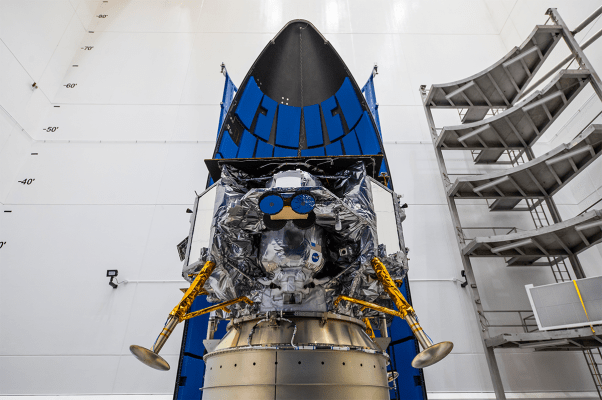Astrobotic’s first lunar lander is ready for lift-off.
The company announced Tuesday that the lander, called Peregrine, has completed final checkouts and fueling after it was mated with United Launch Alliance’s Vulcan Centaur rocket last month. All that’s left now is launch on January 8 — followed, of course, by a historic lunar landing.
“If you’ve been following the lunar industry, you understand landing on the Moon’s surface is incredibly difficult,” Astrobotic CEO John Thornton said in a statement. “With that said, our team has continuously surpassed expectations and demonstrated incredible ingenuity during flight reviews, spacecraft testing, and major hardware integrations.”
“We are ready for launch, and for landing.”
The nearly two-meter tall Peregrine lander will be carrying 20 payloads for government and commercial customers. The lander, which has a payload capacity of 90 kilograms, will operate for around 192 hours after it touches down on the lunar surface. During that time, it will provide power and communications to the payloads. According to a payload user’s guide on Astrobotic’s website, the company is charging about $1.2 million per kilogram of mass delivered to the lunar surface.
Astrobotic is executing the mission as part of a $79.5 million contract from NASA under the agency’s Commercial Lunar Payload Services (CLPS) program. The company was also awarded a second CLPS contract for its much larger Griffin lander; that mission is expected to launch in late 2024.
Pittsburgh-based Astrobotic is one of a handful of commercial players betting that there will be a thriving market for lunar payload delivery services. Other companies include Intuitive Machines, which is aiming to launch its first lander just days after Peregrine, on January 12, as well as Firefly Aerospace and Japanese firm ispace, which had a failed lunar launch earlier this year.
After Peregrine lifts off from Cape Canaveral in Florida, the spacecraft will execute a series of burns to get it into position to touch down on the moon on February 23.
Astrobotic is not the only company with much on the line with January 8’s launch: The mission also marks the first-ever flight of United Launch Alliance’s Vulcan Centaur rocket, a vehicle that has been beset by delays that have subsequently pushed back its debut by years. ULA aims to launch several Vulcan flights next year, and eventually needs to complete a multi-billion-dollar 38-launch deal with Amazon for its Project Kuiper satellite broadband constellation.
Astrobotic and ULA were originally targeting a December 24 launch date, but that was later delayed to give ULA time to complete a wet dress rehearsal. That wet dress was finally finished on December 14, ULA said.
